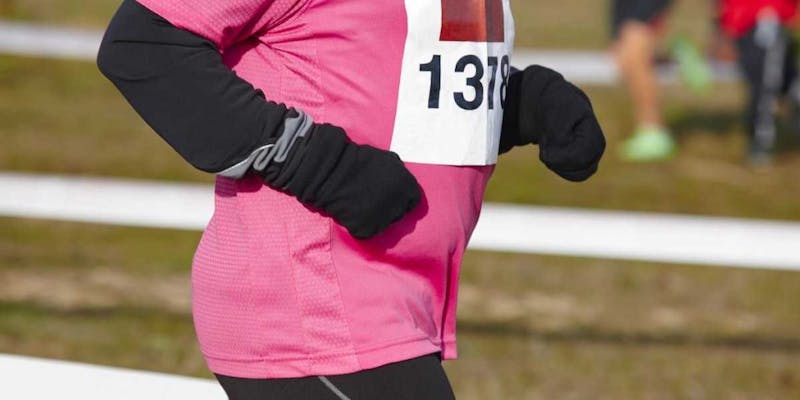
PEOPLE ALWAYS SAY TO ME,
‘Anyone who runs as much as you do deserves to be skinny.’
Of course, what they’re really saying:
‘If you do all this running, why are you still so fat?’
A female heavy runner climb of her car at Black Rock Lake. It’s a shining afternoon in early June in the high country of northeastern Georgia, along with the eastern reach of the Appalachian Mountains.
“Or people think, She claims to follow a healthy diet, but I bet she goes home every night and eats a gallon of ice cream.”
Moving toward the fishing platform where she always begins her Black Rock runs, she pulls out her smartphone. “But you know what bothers me the most? People look at me and think, Big as this girl is, how can she possibly enjoy her sport? She says she loves to run, but she’s really just punishing herself.”
Her voice—bright, plangent, and personal-trained—rouses a middle-aged man who’s been dozing on a sunny bench on the fishing deck. He looks at her —a 39-year-old, 5-foot-7, 250-pound American dressed in a ball cap, fitness top, knee-length running tights, and training shoes—and does a cartoon-grade double take. The runner blasts him with a big smile and a “Good afternoon, sir!”
And then, turning, she extends her arm for a ritual selfie. Every run, every race, every traverse of a mountain trail, every gym workout, she begins by taking a photo. “To prove that I was out here,” she explains. “To document the fact that I achieved something today.”
Later, she will post the photos on her Facebook page and her blog, in which she both writes of the joys of the running life and thoughtfully, humorously, and sometimes angrily rebuts her doubters, who can’t believe that a self-described fat person might discover—or deserve—this kind of joy. No pun intended, her blog has earned a widening audience and influence.
“Over the last 40 years, the collective BMI (body mass index) of the American public has shot up dramatically, with catastrophic consequences,” says David Ludwig, M.D., Ph.D., founder, and director of the New Balance Foundation Obesity Prevention Center at Boston Children’s Hospital. “We understandably spotlight the biggest losers, the people who drop 100 pounds and turn their lives around. But there are countless others who, despite exercising and following a high-quality diet, can only whittle their BMI to a certain point. They need to learn to live healthfully with the disease of obesity, rather than make themselves miserable trying to ‘cure’ themselves of it.”
With a BMI of approximately 39.2, more than nine points above the National Institutes of Health established line defining obesity, a typical overweight marathoner, ultramarathoner, and trail run has emerged as a role model for this group; a living argument that it’s possible to be both fit and fat. “I’m pretty much in love with my body,” she writes in her blog. “Sometimes I get disappointed or angry with it, but like any long-term, committed relationship, it usually comes right back to love and respect.”
Share with

